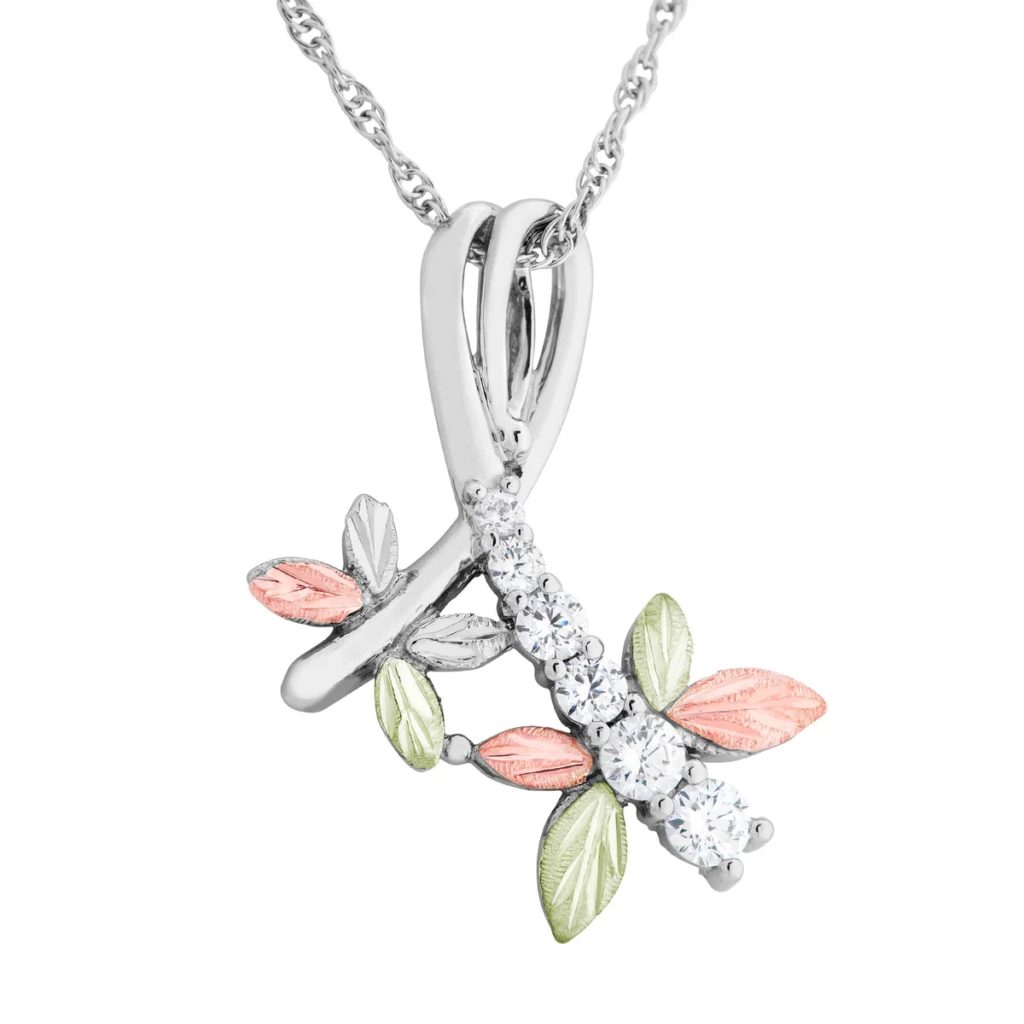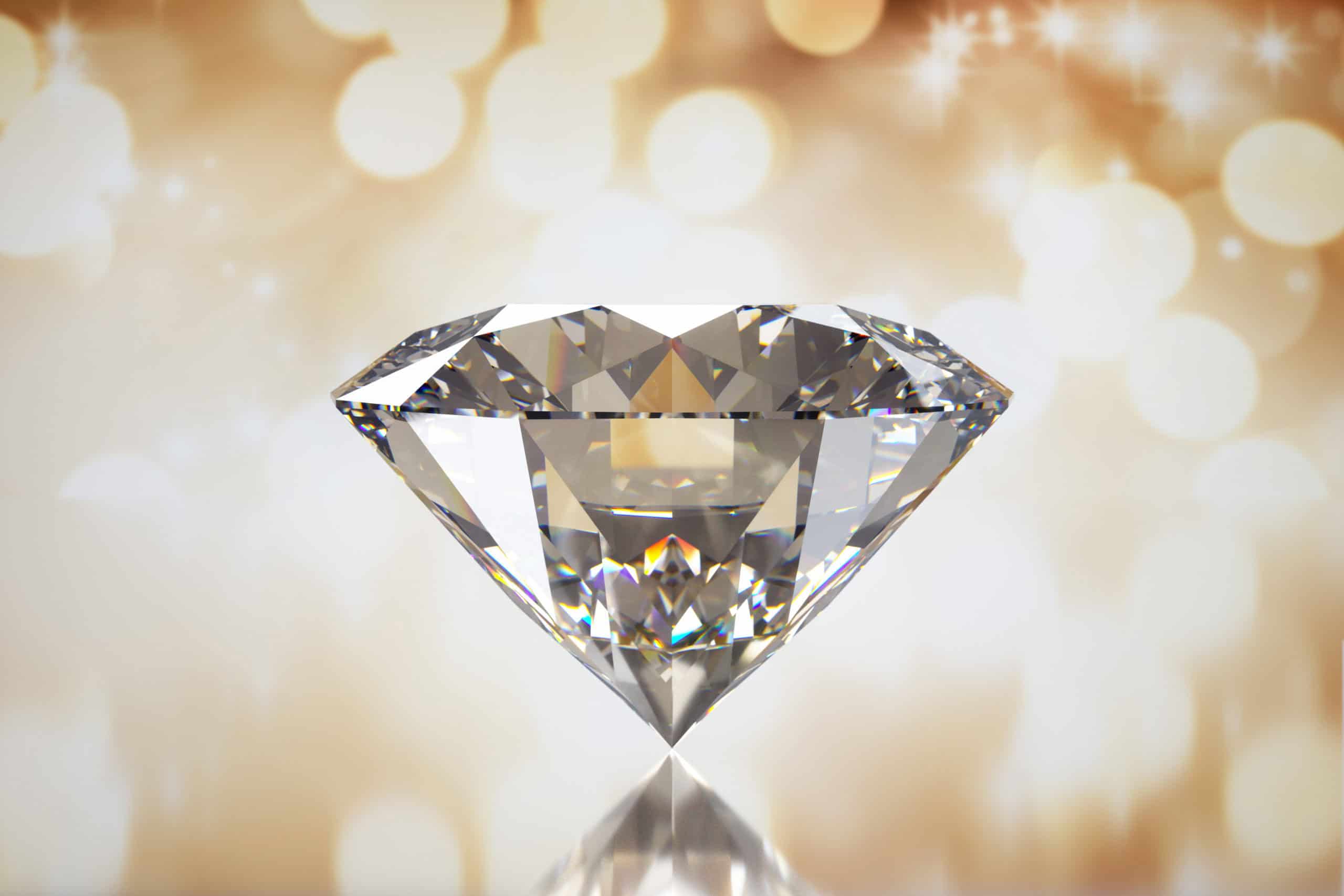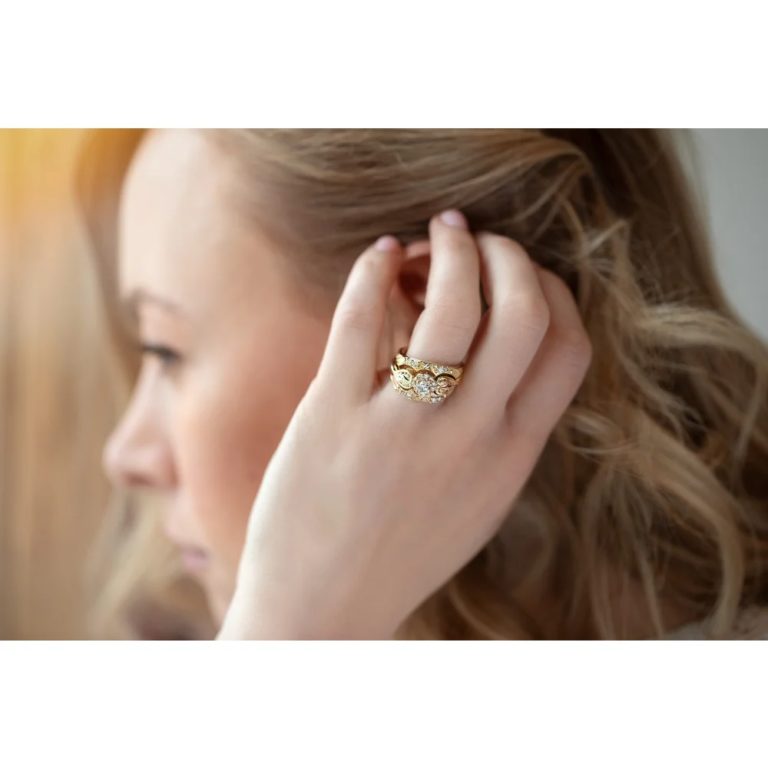Learn All About Diamonds
The first step in any purchase of diamonds is to establish that there are two types of diamonds: natural diamonds and synthetic diamonds. First we’ll focus on natural diamonds.
NATURAL DIAMONDS
Diamonds consist of carbon atoms that bond together under extreme pressure and temperature as deep as 87 to 120 miles below the Earth’s crust. Just one carat of diamond, or a unit stone weight of 200 milligrams is made up of billions of such atoms that take between 1- 3 billion years to grow. Under the right conditions, that is. It could also be that diamonds stop forming when conditions change unfavorably, and then pick up where they left off and continue to grow when carbon atoms are available and temperature and pressure are right.
Over time, volcanic eruptions and other shifts in the Earth’s crust transport the diamonds from their depths within the Earth to the surface where man can then mine them from the cooled magma (or kimberlite) that they are buried within. Such volcanic eruptions must be sufficiently violent and fast for the diamonds to survive. If the travel to the surface of the earth happens too slowly, the diamonds could transform into graphite.
Diamond is the hardest and toughest material known to man, it’s name originating from the Greek language and meaning “unbreakable”. The hardness refers to the resistance to scratches. Toughness refers to the resistance to breakage due to impact. Diamond also has high thermal conductivity, which means it is efficient at carrying or conducting heat.
After diamonds are mined, they need to be cut. Though diamonds are very hard, they are also brittle, so they can be broken. However, doing so requires talent that needs to be mastered, as simply breaking the diamond apart is not the goal. If the diamond is to be used for diamond jewelry, the challenge is to break it apart at the precise angle and place to bring out the best facets of the diamond and also to cut away any defects or impurities.
Watch this YouTube video about the various types of cuts of diamonds: http://youtu.be/YW69jPSAlEo
Once cut, the diamond is repeatedly polished to remove extraneous material and eventually bring about the desired shape as well. If any defects remain in the final diamond product, additional polishing or laser drilling either removes them, or they may sometimes be filled. Placing the diamond strategically in a piece of jewelry so the flaw is not visible is also a common practice.
One may occasionally notice diamond jewelry where the diamond may be colored. These colors in the diamonds are in fact a result of defects or impurities. Boron and nitrogen are two of a very select few minerals that can penetrate the tight weave of diamond atoms. Boron results in a bluish color in the diamond and nitrogen causes a yellow. Other impurities or defects in the atom structure can bring about the colors of brown, red, pink, purple or orange.
Watch this YouTube video about the various grades of diamond clarity: http://youtu.be/JkybfyLO2FI
Diamonds are very popular for jewelry because of their durability. Since it is the hardest material, only another diamond can scratch a diamond. Diamond jewelry therefore resists daily wear and tear very easily and maintains its polish and condition even if worn every day. Other uses of diamond include kitchen knives, hand tools such as grinding stones, industrial abrasives applications of different forms and purposes, as well as in the semiconductor industry.
Annually, about 57,000 pounds of diamonds are mined worldwide. The majority of the world’s diamonds come from Central and South Africa, though Australia, India, Russia, Brazil and Canada have plenty of diamond resources as well.
Diamonds have been subject of much controversy due to human abuse of miners and child work by armed groups in Africa that finance their operations with the sale and distribution of diamonds. The term blood diamonds is well known now especially after a popular movie with same title about exactly this issue. To curb the distribution of blood diamonds, the United Nations and the diamond industry established a certification program called the Kimberly Process. According to the United Nations Department of Public Information, it seems to be working: “Hailing the Kimberley Process Certification Scheme as ‘too important to fail’, delegates in the General Assembly [of the United Nations] today [December 20, 2011] praised the Process for having significantly reduced the scope of the conflict diamond trade…”
SYNTHETIC DIAMONDS
Synthetic diamonds are created in the lab either through a process that simulates the high pressure and high temperature under which natural diamonds develop (HPHT), or through a process called chemical vapor deposition (CVD). Though natural diamonds are considered to be hardest material, some lab-created diamonds actually exceed natural diamonds in terms of hardness, thermal conductivity and electrical conductivity.
The HPHT process simulates the conditions in the Earth using very high pressures to grow diamonds. Contrary to the HPHT method, CVP uses low pressure to create diamonds. Carbon atoms are mixed with carbon-containing gas, such as methane and hydrogen in a grow chamber. Heat is then applied to this mix, which sets off a chemical reaction that makes the carbon form into the dense structure of a diamond, the same as natural diamonds. By manipulating the amount of gases, as well as the mixture of carbon atoms and the temperature, different types of synthetic diamonds can be grown.

One major advantage of CVD diamonds is that they can be produced onto large areas of other substances. The thermal and electrical conductivity are characteristics crucial to many industrial items especially in electronics. Hence, synthetic CVD diamonds have found a wide range of commercial and industrial applications and are commonly used for high voltage switches, optics, transistors and semi-conductors. The hardness of the synthetic diamonds also makes them a preferred material for cutting tools such as grinding wheels and saws and other abrasive tools for polishing and other applications.
Synthetic diamonds can also be grown in different colors such as clear, white, blue, green or orange, etc. This is accomplished in the same fashion that nature does it: mix in boron and nitrogen, and the diamond assumes a respective color. Even in the jewelry industry, synthetic diamonds are now commonly used for earrings, pendants, rings, and other jewelry items. Cubic Zirconia (CZ) is actually the only “synthetic diamond” that doesn’t consist of carbon, and instead is made of zirconium dioxide. A good example of how closely cubic zirconia resembles natural diamond can be see in the photo at above of Landstroms very popular Black Hills Gold cubic zirconia necklace. Other stones which are commonly referred to as types of “synthetic diamond” are Moissanite and White Sapphire. In essence, any natural diamond can be reproduced synthetically.
DIAMONDS ARE FOREVER
Because of the beauty and strength of diamonds, for centuries they’ve been used to symbolize the lasting tradition of marriage, eternal love and commitment. Though the vast majority of wedding jewelry is comprised of natural diamonds, they are indeed very expensive due to the limited supply as a natural resource as well as the extent and efforts to refine it to the final product. Synthetic diamonds are much easier and faster to produce and are therefore much less expensive. Consider that a natural diamond takes billions of years to grow. Synthetic diamonds are made within a couple of days.
There is a high concern within the jewelry business that synthetic gemstones may actually be marketed as natural diamonds. How do you discern a natural diamond from a synthetic diamond? A special device using the technology of spectroscopy was developed to differentiate between the two types of diamonds. Unless otherwise identified as cubic zirconia, etc., Landstroms only uses genuine conflict-free diamonds in all of their Black Hills Gold and silver wedding jewelry, Mothers jewelry and other diamond creations.
For the end user there may not be such a difference between natural and synthetic diamonds. Except, of course, for those that insist on the natural type, it is important. In terms of looks, the layperson’s eye likely cannot distinguish one from the other, though it is said that synthetic gemstones such as CZ are less flawed, clearer and look purer. However, some say it sometimes makes the stone look artificial.


